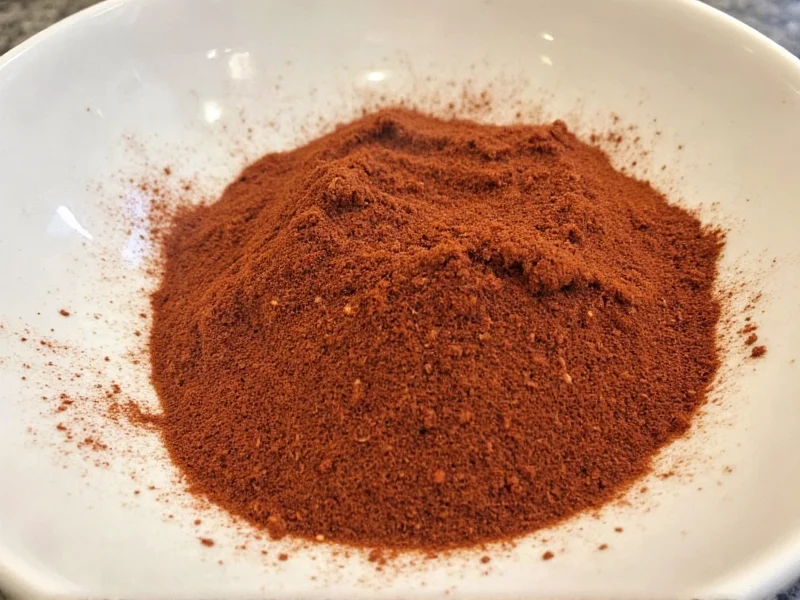Understanding the perfect pastrami spice mix is essential for recreating that authentic deli flavor at home. This comprehensive guide breaks down the components, ratios, and techniques that transform ordinary meat into extraordinary pastrami. Whether you're a home cook experimenting with curing or a culinary enthusiast seeking authentic flavors, mastering this spice blend unlocks the secret to restaurant-quality results.
The Essential Components of Authentic Pastrami Spice Mix
While regional variations exist, the foundation of any quality pastrami spice rub centers around specific spices that work in harmony. Coriander seeds provide the distinctive citrusy, floral base note that defines traditional pastrami seasoning. When toasted and ground, they release complex flavors that penetrate the meat during the curing process.
Black pepper adds necessary heat and complexity, while garlic powder delivers that unmistakable savory depth. Paprika contributes both color and subtle sweetness, balancing the sharper elements. Mustard seeds offer a tangy undertone, and allspice provides warm, clove-like notes that tie everything together.
Traditional Proportions for Homemade Pastrami Spice Mix
Getting the ratios right makes all the difference between authentic deli-style pastrami and something that merely resembles it. The following proportions create a balanced blend that honors traditional methods while allowing for personal adjustments:
| Spice | Percentage | Flavor Contribution |
|---|---|---|
| Coriander seeds (toasted and ground) | 40% | Citrusy, floral base note |
| Freshly ground black pepper | 25% | Sharp heat and complexity |
| Garlic powder | 15% | Savory depth |
| Sweet paprika | 10% | Color and subtle sweetness |
| Yellow mustard seeds (crushed) | 7% | Tangy undertone |
| Ground allspice | 3% | Warm, clove-like notes |
Regional Variations and Personal Adaptations
While the New York deli style remains the gold standard, regional interpretations offer interesting alternatives. Montreal-style pastrami often incorporates more garlic and sometimes a touch of cayenne for additional heat. Some modern interpretations include a small amount of brown sugar to balance the savory elements, though traditionalists argue this deviates from authentic preparation.
For those seeking a smoked flavor without actual smoking, adding a small amount of smoked paprika (replacing 2-3% of the regular paprika) can provide that characteristic note. When adjusting proportions for homemade pastrami spice rub recipe variations, remember that coriander should always remain the dominant flavor.
Application Techniques for Maximum Flavor Impact
The method of applying your pastrami spice mix significantly affects the final product. After curing your meat (typically brisket), thoroughly pat it dry before applying the spice rub. Use generous amounts—approximately 1 tablespoon per pound of meat—and press the mixture firmly into the surface.
For optimal results, refrigerate the coated meat uncovered for 12-24 hours before cooking. This dry brining process allows the spices to penetrate deeper and form a flavorful crust during cooking. When preparing traditional deli-style pastrami seasoning, avoid oiling the meat before application, as this prevents proper adhesion of the dry rub.
Storage and Freshness Considerations
For the best flavor, prepare your pastrami spice mix from scratch when needed. Whole spices maintain freshness significantly longer than pre-ground versions. Toast coriander seeds and mustard seeds in a dry skillet over medium heat until fragrant (about 2-3 minutes), then cool before grinding.
If storing your homemade blend, use an airtight container away from light and heat. Properly stored, the mix retains optimal flavor for 2-3 months. For extended storage of your authentic New York style pastrami spice mix, consider freezing in small portions—this preserves volatile oils that degrade at room temperature.
Troubleshooting Common Pastrami Spice Mix Issues
Several issues commonly arise when working with pastrami seasoning. If your spice crust isn't adhering properly, the meat surface was likely too moist—always pat thoroughly dry before application. For uneven flavor distribution, ensure you're pressing the rub firmly into all surfaces.
When the final product lacks depth, check your spice freshness—stale spices won't deliver proper flavor. If the pastrami tastes bitter, you may have over-toasted the coriander seeds. For those wondering how to make pastrami spice mix from scratch with balanced heat, remember that black pepper should provide warmth without overwhelming the other elements.
Creating Your Perfect Custom Blend
While traditional proportions provide an excellent starting point, personal preference plays a role in perfecting your pastrami spice mix. Keep detailed notes when experimenting with variations of your best spices for pastrami cure. Some prefer slightly more garlic for a bolder profile, while others increase paprika for richer color.
The key to successful customization lies in maintaining coriander as the dominant flavor while adjusting supporting elements. When developing your signature blend, make changes incrementally—altering one component at a time by no more than 5%—to properly assess its impact on the overall flavor profile.











 浙公网安备
33010002000092号
浙公网安备
33010002000092号 浙B2-20120091-4
浙B2-20120091-4